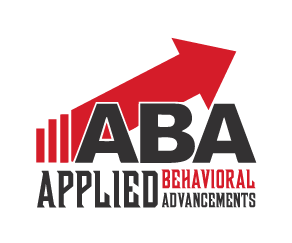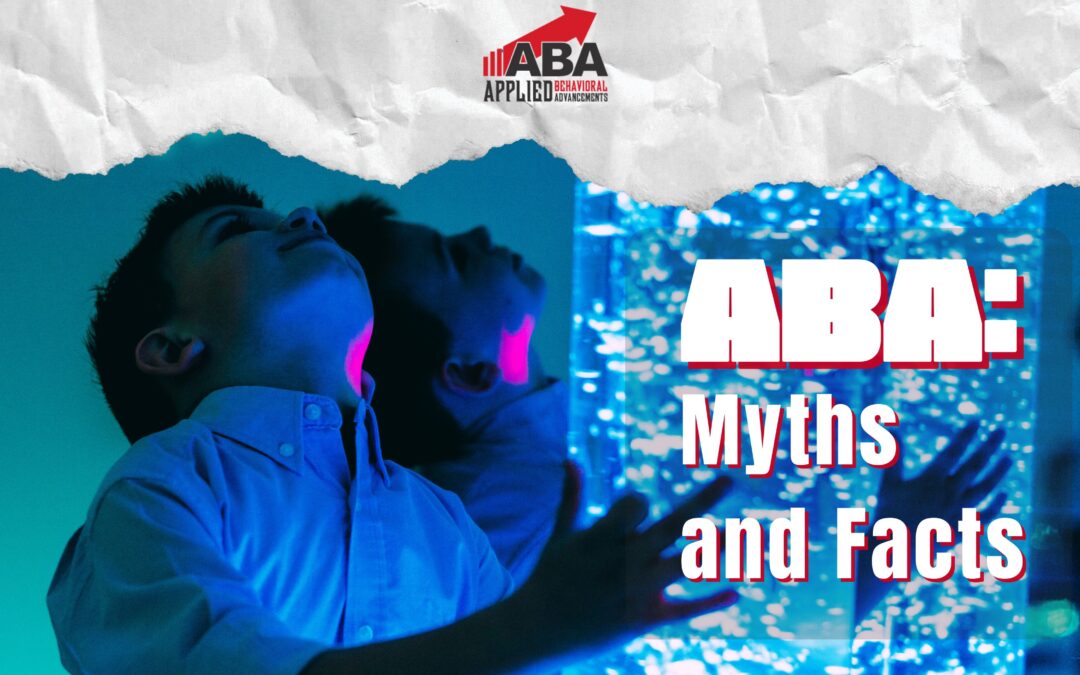In this article, we help you learn the truth about ABA: Myths and Facts. While finding information online can be quite helpful, you’re also likely to run into information that isn’t altogether true. Applied Behavioral Analysis, commonly referred to as ABA, is a popular treatment for individuals on the Autism spectrum. Despite its popularity, there are several persistent rumors that seem to surround the field. In this article, we will do our best to dispel the myths and tell you the truth about ABA.
This article espouses on the core values and beliefs of our agency, Applied Behavioral Advancements, LLC (ABA-LLC). We can’t claim to speak for the entire ABA field, as the idea that ABA has one singular definition or practice is itself a myth. You will find dozens of different kinds of BCBAs with different beliefs about how the therapy works best. When seeking care for a loved one, always ask questions to get to know your clinicians as people as well as therapist. Hopefully, you can find someone with whom you share values and goals.
We also acknowledge that unfortunately, bad clinicians have used ABA to abuse and mistreat clients. When we address ABA ‘myths’ in this article, we are not seeking to erase the harmful experiences of any individual. At ABA-LLC, our goal is to share our vision for compassionate, person-centered Applied Behavior Analysis that benefits all members of our community.
Myth #1: ABA is Only for Individuals with Autism
Fact: BCBAs tailor ABA therapy to the unique needs and goals of every individual they serve
When most people think of ABA, they think of Autism intervention for young children diagnosed with Autism Spectrum Disorder. Though ABA is commonly prescribed for children on the spectrum, ABA is useful for a wide variety of individuals.
ABA therapy is a treatment for verbal aggression, physical aggression, property destruction, self-injurious behavior, PICA, Elopement, ADHD, Inappropriate Sexual Behaviors, Substance Abuse, anxiety disorders, learning disabilities, and developmental disabilities. Furthermore – neurotypical individuals with no diagnosis can benefit from ABA therapy. After all, behavior is something we ALL do.
ABA is a scientific approach to understanding the what and why of human behavior. When an individual is performing a maladaptive behavior, ABA seeks to understand why. That way, the therapist can help the individual stop performing behaviors that hold them back, and learn new behaviors that help them to meet their goals. It is a systemic, data-backed approach to learning new skills.
Whether you’re a child with Autism learning to ask for your juice bottle, or a neurotypical adult trying to stop biting your nails – ABA can help you reach your goals!
Myth #2: ABA is Punishment Based
Fact: ABA works through positive reinforcement
ABA transforms behavior through positive reinforcement. Positive reinforcement occurs when immediately after an individual performs a behavior, something desirable is introduced into the environment. This might include a favorite toy, access to a desired activity, or a snack. As therapists we hope that this positive reinforcement increases the likelihood that the client will perform the behavior again on their own. Additionally, negative reinforcement occurs when immediately after an individual performs a behavior, aversive stimulus is removed from the environment.
Most contemporary ABA practitioners avoid punishment. While punishment can change behavior quickly, it often results in adverse reactions like avoidance, resentment, and fear. Ultimately, Positive Reinforcement is much more powerful than punishment in the long term.
That being said, punishment is defined in ABA. It is only to be used when other reinforcement based strategies are not effective for the client. In ABA, punishment describes anything that occurs after a behavior that makes that behavior less likely to occur again. If you always get car sickness from reading in the car, the car sickness is your “punishment” for reading in the car. Since you’ve received a “punishment”, you will be less likely to do this behavior again.
Similar to reinforcement, Punishment is categorized as either positive or negative depending on if stimulus is added or removed. Positive punishment occurs when immediately following the behavior, a stimulus is introduced to the environment that decreases the likelihood of the behavior occurring again. An example might be a coach requiring students to run laps for bad behavior in sports. Negative punishment occurs when immediately following the behavior, something is removed from the environment that decreases the likelihood of the behavior occurring again. A negative punishment might be taking a toy or device away as a response to bad behavior.
Myth #3: ABA “fixes” or “changes” a person
Fact: ABA-LLC starts all therapy with the guiding belief that every individual is already unique, perfect, and competent.
B.F. Skinner, one of the “founders” of ABA, once said “I’m not trying to change people, I’m just trying to change the world in which they live. This quote has long been a lighthouse for all the work we do at ABA-LLC. We don’t believe that any of our clients, no matter their diagnosis, need to be “cured.” We recognize that they are special and deserving individuals who face challenges like anyone else. Our BCBAs want to help them grow and change. ABA therapy is just one option for helping individuals conquer challenges and meet their goals.
Our agency always takes a person-centered approach to ABA. Our founder Chris George describes every person’s unique perspective as being fundamental to the work of a BCBA: “Through observation and interviews, the BCBA seeks to identify the individual’s strengths, skills, interests, and life goals. On the flip side of that coin, the BCBA will identify skill deficits and socially inappropriate behaviors that hinder their success. Using all of the collected information, the clinician develops a plan to strengthen their current skills and help teach new skills including functional equivalent replacement behaviors through positive reinforcement. Respect, acceptance, and encouragement ensure that every individual’s plan is as unique as they are!”
Ultimately, a person will change when they go through ABA therapy. However, we hope that this change is not something forced on to them by outside forces, but something they find within themselves. Our BCBAs care deeply for their clients. It is an honor to have a hand in guiding them to their fullest potential.
About ABA-LLC
ABA-LLC is one of the largest suppliers of Behavior Support in the State of Kentucky. Since 2007, the agency has created innovative strategies to improve the lives of unique individuals. ABA-LLC works with over 150 contractors, each dedicated to building an inclusive culture that celebrates individuals of all abilities. No matter who you are, you can reach your goals at ABA-LLC.
In everything the agency does, ABA-LLC is set apart from its competitors by its uniquely person-centered approach. The agency strives to provide services from a place of deep love for the population they serve. Their work exemplifies the belief that every individual has a right to live a fulfilling and independent life integrated within their communities. There is no objective to change a person, but rather to give them the tools they need to succeed. B.F. Skinner summarizes this vision in his quote: “I’m not trying to change people. All I want is to change the world in which they live.”

